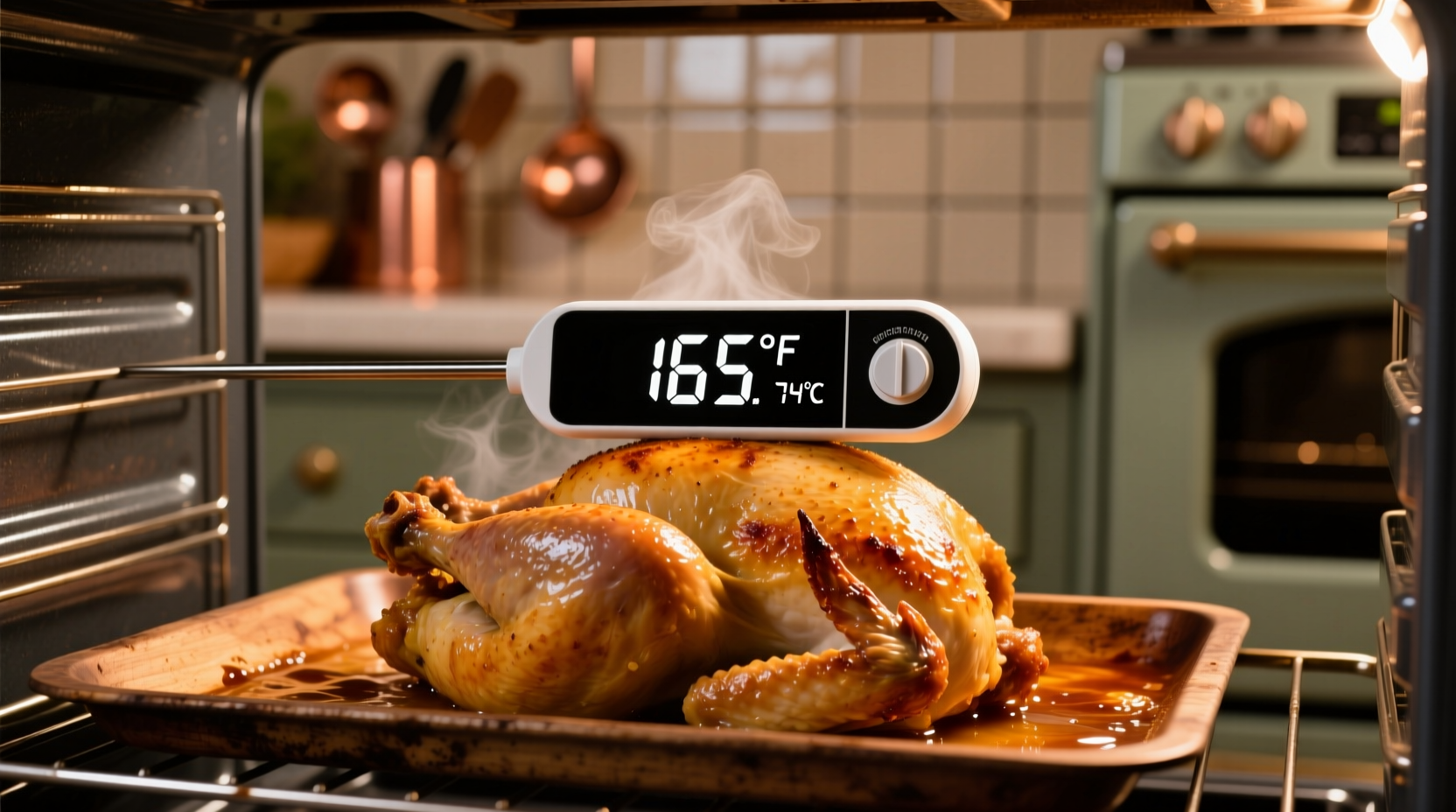The ideal oven temperature for cooking chicken is 375°F (190°C), with a safe internal temperature of 165°F (74°C) for all poultry. This balance ensures thorough cooking while maintaining moisture and preventing dryness.
Getting chicken perfectly cooked in the oven isn't just about setting a temperature—it's about understanding the science behind safe cooking while achieving restaurant-quality results at home. Whether you're preparing a simple weeknight dinner or hosting a special gathering, knowing the precise oven temperature transforms your chicken from potentially unsafe to succulent perfection.
Why Temperature Matters: Safety Meets Quality
Chicken requires careful temperature management for two critical reasons: food safety and texture quality. The USDA Food Safety and Inspection Service confirms that poultry must reach 165°F internal temperature to eliminate harmful bacteria like salmonella and campylobacter. However, cooking to this exact temperature without proper oven settings often results in dry, overcooked chicken.
| Chicken Cut | Recommended Oven Temp | Approx. Cooking Time | Resting Time |
|---|---|---|---|
| Boneless breasts | 375°F (190°C) | 20-25 minutes | 5 minutes |
| Bone-in breasts | 375°F (190°C) | 30-35 minutes | 8 minutes |
| Thighs/drumsticks | 400°F (204°C) | 35-40 minutes | 10 minutes |
| Whole chicken | 375°F (190°C) | 20 min/lb + 15 min | 15 minutes |
The 375°F Sweet Spot: Why This Temperature Works Best
While many recipes suggest temperatures ranging from 325°F to 450°F, 375°F consistently delivers optimal results for most chicken preparations. This moderate heat allows for even cooking without burning the exterior before the interior reaches safe temperatures. At this setting, chicken experiences the perfect balance of Maillard reaction (browning) while retaining moisture.
Professional chefs like Antonio Rodriguez emphasize that oven temperature directly impacts how heat transfers through the meat. "Higher temperatures create a better sear but risk overcooking the interior," he explains. "At 375°F, you get sufficient browning while allowing the heat to penetrate gradually, giving you control over the final texture."
Step-by-Step Cooking Process for Perfect Chicken
Preparation Essentials
Before you even preheat your oven, proper preparation sets the stage for success:
- Bring chicken to room temperature (20-30 minutes out of refrigerator)
- Dry the surface thoroughly with paper towels
- Season generously, focusing on both sides
- Consider brining for extra moisture retention (especially for breasts)
Cooking Temperature Checkpoints
Monitoring temperature throughout the cooking process prevents common mistakes:
- Preheat oven to 375°F with rack in center position
- Place chicken on rack over baking sheet (promotes air circulation)
- Check internal temperature 5-7 minutes before expected finish time
- Remove when thermometer reads 160°F (temperature will rise 5°F during resting)
- Rest covered loosely with foil for recommended time

Avoiding Common Temperature Mistakes
Many home cooks make these critical temperature errors that compromise both safety and quality:
The Guesswork Trap
Relying on cooking time alone rather than internal temperature leads to inconsistent results. Factors like starting temperature, chicken thickness, and oven accuracy significantly impact cooking time. The FDA Food Code recommends using a calibrated food thermometer as the only reliable method to verify poultry safety.
Resting Is Non-Negotiable
Skipping the resting period causes precious juices to escape when cutting. During resting, residual heat continues cooking the chicken (carryover cooking), raising the internal temperature 5-10°F while allowing proteins to reabsorb moisture. This critical step transforms potentially dry chicken into succulent perfection.
Special Considerations for Different Cooking Scenarios
Certain situations require temperature adjustments while maintaining the 165°F safety standard:
Convection Oven Adjustments
When using convection (fan) settings, reduce the temperature by 25°F while maintaining the same cooking time. The circulating air creates more efficient heat transfer, essentially cooking at a higher effective temperature.
Cold Climate Challenges
During winter months or in colder kitchens, allow additional 5-10 minutes for chicken to reach room temperature before cooking. Starting with cold chicken significantly extends the time needed to reach safe internal temperatures, increasing the risk of uneven cooking.
Verifying Proper Cooking: Beyond the Thermometer
While a thermometer remains essential, these additional indicators confirm properly cooked chicken:
- Juices run clear when pierced (not pink)
- Meat separates easily from bone
- Texture is firm but yields slightly when pressed
- Skin achieves golden brown color (for skin-on preparations)
Remember that color alone isn't a reliable indicator of doneness—chicken can appear white while still undercooked, or maintain a slight pink hue even when properly cooked due to myoglobin reactions.
Storing and Reheating Leftovers Safely
Proper temperature management continues after cooking:
- Refrigerate leftovers within 2 hours (1 hour if room temperature exceeds 90°F)
- Store in shallow containers for rapid cooling
- Reheat to 165°F internal temperature
- Consume within 3-4 days for optimal quality and safety











 浙公网安备
33010002000092号
浙公网安备
33010002000092号 浙B2-20120091-4
浙B2-20120091-4